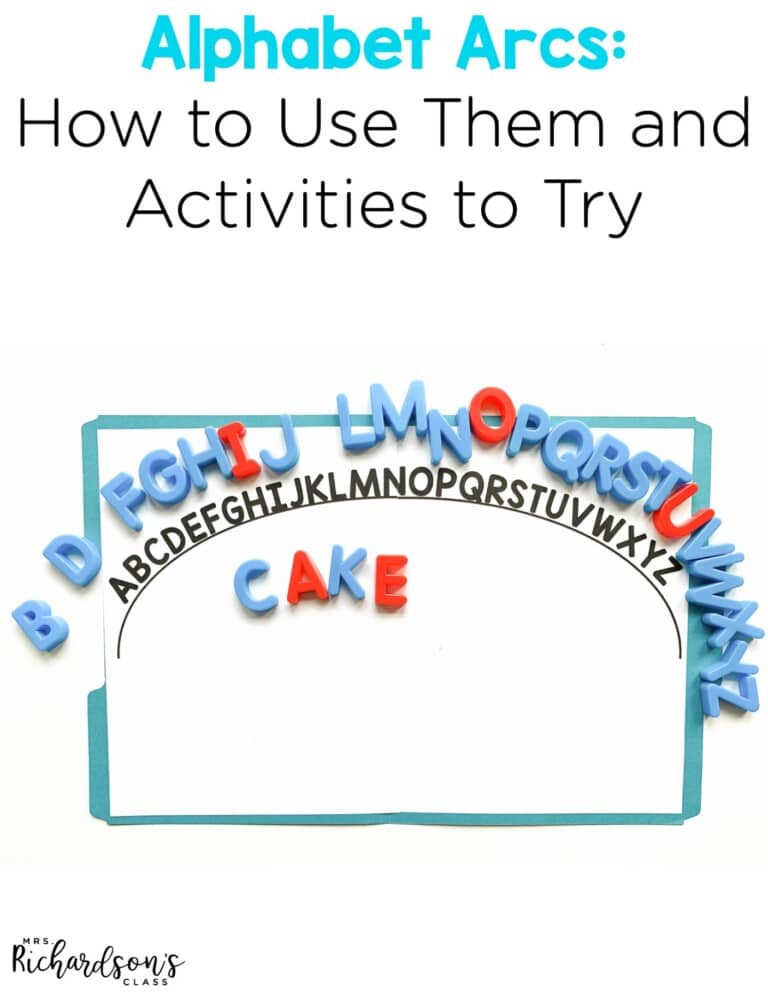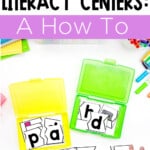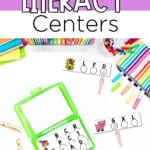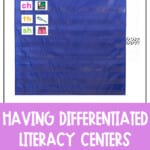

When you hear the words “differentiating literacy centers”, how do you feel? Do you start thinking about how overwhelming the idea is? Do you think of how daunting the task may seem? Or maybe you’re not really sure what that looks like in the classroom and how to get started.
Literacy centers are a valuable tool for developing reading and writing skills in young children. However, not all students learn at the same pace or in the same way. That’s where differentiating literacy centers comes in. It ensures that all students are challenged at their own level and have the opportunity to make progress. Today we’ll explore what differentiating literacy centers means, why it’s important, and how to do it. I’ll share some practical ways you can do it without feeling overwhelmed or like it’s impossible.
Differentiating literacy centers means creating activities and tasks that cater to the individual needs of each student. It involves taking into account each student’s reading skills, learning style, and goals to help move each reader forward.
You probably already do lots of differentiating throughout the day. You may scaffold information while teaching in a whole group setting or vary the skill level of the questions you ask students. In small groups, you evaluate where each group is and what skills and strategies they need to make progress. In literacy centers, you’re just meeting each student where they are so they can make progress there, too.
Differentiating literacy centers can benefit both struggling and advanced students. For struggling students, it can provide them with activities that match their abilities, making learning more accessible and less overwhelming. For advanced students, it can challenge them and prevent them from getting bored or disengaged.
Do you need to differentiate every single center? Not necessarily. Some centers will naturally lend themselves to differentiation based on a student’s phonics, reading, and writing skills. For example, in a writing center, students will do what they are capable of.
In a listening center, students will listen, comprehend, and respond to a text in a way that they are capable of. Some students may only be drawing responses with some labels. Some students may write short sentences. Other students may have a more in-depth analysis of a book they listened to.


Literacy centers are already an important time of day, but differentiated literacy centers can be powerful! Give it a try! Try to remember not to be afraid to make a plan and make changes to it if it’s not working. It’s totally worth it to see your students succeed!
To help make differentiating literacy centers a breeze, I have the Science of Reading Literacy Centers Bundle that has tons of activities for your centers. Pick which skills your students need, print, and you’re done!
You can snag the bundle to save the most money or grab any of the sets individually. Check them out!

Want to use the latest research to boost your readers during small groups? This FREE guide is packed with engaging ideas to help them grow!

I’m a K-1 teacher who is passionate about making lessons your students love and that are easy to implement for teachers. Helping teachers like you navigate their way through their literacy block brings me great joy. I am a lifelong learner who loves staying on top of current literacy learning and practices. Here, you’ll find the tools you need to move your K-2 students forward!


| Cookie | Duration | Description |
|---|---|---|
| cookielawinfo-checkbox-analytics | 11 months | This cookie is set by GDPR Cookie Consent plugin. The cookie is used to store the user consent for the cookies in the category "Analytics". |
| cookielawinfo-checkbox-functional | 11 months | The cookie is set by GDPR cookie consent to record the user consent for the cookies in the category "Functional". |
| cookielawinfo-checkbox-necessary | 11 months | This cookie is set by GDPR Cookie Consent plugin. The cookies is used to store the user consent for the cookies in the category "Necessary". |
| cookielawinfo-checkbox-others | 11 months | This cookie is set by GDPR Cookie Consent plugin. The cookie is used to store the user consent for the cookies in the category "Other. |
| cookielawinfo-checkbox-performance | 11 months | This cookie is set by GDPR Cookie Consent plugin. The cookie is used to store the user consent for the cookies in the category "Performance". |
| viewed_cookie_policy | 11 months | The cookie is set by the GDPR Cookie Consent plugin and is used to store whether or not user has consented to the use of cookies. It does not store any personal data. |


